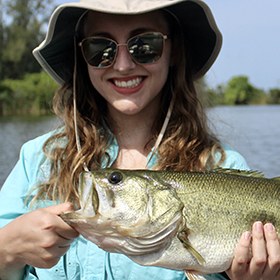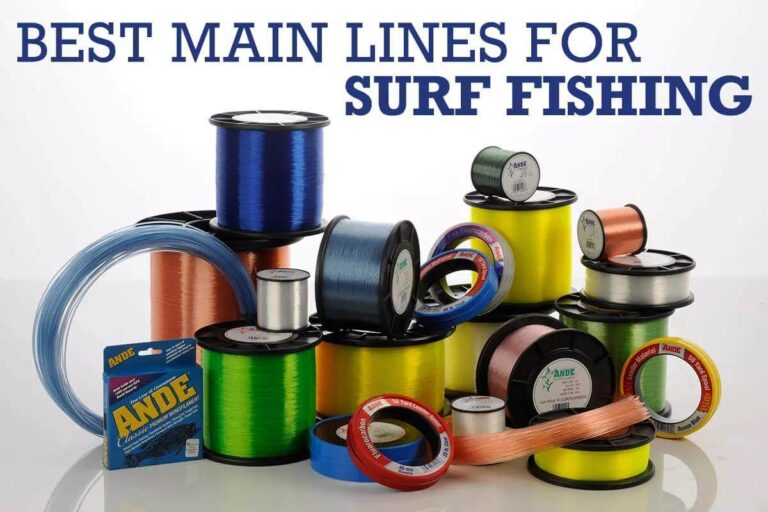Flies, Lures, And Bait: Comparing Fly Fishing Vs Regular Angling
Fly fishing and regular fishing differ in their use of flies, lures, and bait. Fly fishing utilizes artificial flies, while regular fishing relies on lures and bait.
Fly fishing enthusiasts employ a unique casting technique that aims to imitate the motion of a fly, enticing fish to strike. Regular fishing, on the other hand, typically involves casting lures or using bait to attract fish.
Each method has its own appeal and advantages, and the choice ultimately depends on the angler’s preferences and the target species.
Understanding the distinctions between these two forms of fishing helps anglers decide which approach to pursue for an enjoyable and successful fishing experience.
Understanding Fly Fishing And Regular Angling
Fly fishing and regular angling are popular fishing techniques used by anglers across the globe.
While both methods aim to catch fish, they differ in several aspects, including the gear used and the techniques employed.
Differentiating Between Fly Fishing And Regular Angling
When it comes to distinguishing between fly fishing and regular angling, the primary difference lies in the methods employed to lure and catch fish. In fly fishing, anglers use artificial flies made from materials such as feathers and fur to mimic insects or small baitfish.
These flies are lightweight and designed to float or sink, depending on the fishing conditions. Anglers cast these flies using a fly rod and line combination, relying on the weight of the line to propel the fly forward.
On the other hand, regular angling, also known as bait fishing or spinning, involves using live bait, such as worms or minnows, or artificial lures, such as spoons or crankbaits. Anglers utilizing regular angling techniques typically employ a spinning rod and reel, or a baitcasting setup, to cast their bait or lure into the water.
The key difference here is the use of natural or artificial bait versus artificial flies.
Exploring The History And Origins Of Fly Fishing
Fly fishing has a rich history that dates back centuries. The origins of this technique can be traced to ancient civilizations in Egypt, Greece, and Rome.
In these early days, fly fishing was primarily used for catching freshwater fish, and the flies were predominantly made using natural materials, such as feathers, horsehair, and silk.
Over time, fly fishing gained popularity in Europe, particularly in regions like England and Scotland. These countries played a vital role in refining the equipment and techniques associated with fly fishing.
The nineteenth century marked a significant turning point in the history of fly fishing, with advancements in fly rod construction and the development of synthetic materials for fly tying.
Today, fly fishing has become a global sport, attracting enthusiasts from all walks of life. Whether it’s chasing trout in mountain streams or targeting saltwater species in the open ocean, fly fishing offers a unique and engaging angling experience.
The Evolution Of Regular Angling Techniques
Regular angling techniques have also undergone significant evolution throughout history. Early forms of regular angling involved using simple rods made from bamboo or wood, paired with handcrafted lines and hooks.
As time progressed, advancements in materials and manufacturing techniques led to the development of more sophisticated spinning rods and reels.
The introduction of artificial lures in regular angling marked a turning point in the pursuit of game fish. With the advent of technologies such as plastic molding and metal spinning, anglers gained access to a wide range of lures designed to mimic natural prey and attract fish.
Today, regular angling encompasses various techniques, including casting, trolling, and jigging, providing anglers with a diverse set of options to match their fishing goals.

Flies: Key To Fly Fishing Success
When it comes to fly fishing, one of the most important elements of success lies in selecting the right flies. Unlike regular fishing, fly fishing relies on artificial flies that mimic the insects or other aquatic creatures that fish feed on.
Each fly is designed to imitate a specific insect, such as mayflies, caddisflies, or even small fish. Understanding the different types of flies and when to use them can significantly enhance your chances of reeling in a big catch.
Unveiling The Secrets Of Fly Selection
Choosing the right fly can make or break your fly fishing experience. When selecting a fly, several factors come into play, including the time of year, water conditions, and the type of fish you are targeting.
Each specific fly mimics a different insect species and their various life stages. Learning how to match the hatch, or the phase when insects are active and fish are feeding on them, is crucial to success.
Before heading out on your fly fishing excursion, take some time to research the insect species prevalent in the area you’ll be fishing. Knowing the different stages of insect development—such as nymphs, emergers, or adults—will assist you in selecting the right fly patterns.
Once armed with this knowledge, you can strategically choose flies that imitate the insects most likely to attract the attention of hungry fish.
Nymphs, Dry Flies, And Streamers: Which Is The Best Choice?
When considering fly fishing, there are three main types of flies you’ll encounter: nymphs, dry flies, and streamers. Each serves a specific purpose and is effective under different conditions. Understanding the strengths of each type will allow you to adapt your approach to match the fishing situation.
Nymphs, also known as subsurface flies, imitate the insect larvae that are present beneath the water’s surface. These flies are excellent for fishing in slower-moving or deep waters where fish tend to feed close to the bottom. Nymphs can be fished using various techniques, such as nymphing with an indicator or swinging them through the water column.
Dry flies, on the other hand, float on the water’s surface and imitate adult insects like mayflies, caddisflies, or terrestrials. They are perfect for fly fishing during a hatch when the insects are actively flying around. Observing fish rising to feed on the surface can be an exciting sight, and presenting them with a realistic dry fly can result in memorable catches.
Streamers mimic small fish, leeches, or other prey that fish feed on. These flies are designed to imitate movement and are typically larger in size compared to nymphs and dry flies. Streamer fishing is effective in rivers, streams, and lakes, particularly when fish are actively feeding and looking for a larger meal.
The retrieve techniques used with streamers can vary from aggressive stripping to slow stripping, depending on the fish’s behavior.
The Importance Of Matching The Hatch
Matching the hatch refers to selecting a fly that closely resembles the insects currently hatching and attracting the attention of fish. This technique requires careful observation and knowledge of the local insect life cycle.
When fish are actively feeding on a particular insect species, presenting them with a fly that imitates that species can yield impressive results.
During a hatch, fish become highly selective, feeding almost exclusively on the hatching insect. By closely examining the insects in the air or on the water’s surface, you can identify their size, color, and behavior—critical information for choosing the right fly.
It’s important to have a variety of flies in your tackle box that imitate different stages of insect development, ensuring you can consistently match the hatch and maximize your chances of a successful fishing outing.
Lures: The Versatile Allure Of Regular Angling
When it comes to regular angling, lures are the go-to choice for many seasoned anglers. These artificial bait imitations play a crucial role in attracting fish and enticing them to bite. Their versatility and effectiveness make them an indispensable tool in the angler’s tackle box.
Exploring The Variety Of Lures Used In Regular Angling
Regular angling offers a wide array of lure options that cater to different fishing conditions and target species. From the classic spinnerbaits and plugs to the more intricate jigs and soft plastics, anglers have a wealth of choices at their disposal.
Let’s take a closer look at some of the most popular lures and their characteristics:
| Lure Type | Characteristics |
|---|---|
| Spinnerbaits | Flashy, rotating blades that mimic baitfish |
| Plugs | Dive or float on the surface, imitating wounded prey |
| Jigs | Weighted hooks with various body designs, great for bottom fishing |
| Soft plastics | Realistic and lifelike bait made from soft rubber or plastic, ideal for finesse fishing |

Comparing The Effectiveness Of Artificial Lures
When it comes to catching fish, the effectiveness of artificial lures cannot be underestimated. Unlike live bait, lures offer consistent performance and don’t require constant maintenance or replacement. The versatility of lures allows anglers to target specific species by adjusting the size, color, and presentation.
Moreover, artificial lures can be used in a variety of environments, including freshwater and saltwater, making them a practical choice for anglers seeking diverse fishing experiences.
Understanding How Different Types Of Lures Attract Fish
Each type of lure relies on a unique set of features and functions to attract fish. Spinnerbaits create enticing vibrations and flashes, imitating the movements of a fleeing prey. Plugs, on the other hand, mimic the injured movements of baitfish, triggering predatory instincts in fish.
Jigs excel in mimicking bottom-dwelling creatures like crustaceans, enticing fish that feed near the aquatic floor. Soft plastics offer a realistic look and feel, imitating a wide range of baitfish and insects, effectively fooling even the most cautious fish.
Bait: The Natural Temptation
When it comes to angling, bait plays a crucial role in attracting fish and enticing them to bite. Whether you prefer fly fishing or regular angling, the choice of bait can make all the difference in your success.
Examining The Bait Used In Regular Angling
Regular angling typically involves the use of various natural baits that appeal to fish’s natural feeding instincts. These baits can include worms, minnows, crayfish, and other small creatures that fish are known to feed on.
Using live bait can be highly effective in attracting fish due to its natural movement and scent, mimicking the prey they would encounter in their natural habitats. Anglers often find success with live bait, especially when targeting certain species that are particularly attracted to live prey.
On the other hand, artificial bait such as plastic worms, crankbaits, and spinnerbaits can also be effective in regular angling. These baits are designed to imitate the appearance and movement of real prey, fooling fish into thinking they have found an easy meal.
Live Bait Vs. Artificial Bait: Pros And Cons
Both live bait and artificial bait have their own set of advantages and disadvantages. Here’s a closer look at what each option brings to the table:
| Live Bait | Artificial Bait |
|---|---|
|
|
The Role Of Scent In Bait Selection
Scent plays a crucial role in bait selection, as fish rely heavily on their sense of smell to locate food. When selecting bait, it’s important to consider the scent and how it can attract or repel fish.
Certain scents, like those that mimic natural prey or contain attractants, can be highly effective in enticing fish to strike. Anglers often experiment with different scents to find what works best for the specific fish they are targeting.
In conclusion, the choice of bait is a vital aspect of angling, whether you engage in fly fishing or regular angling. Understanding the different types of bait available, the pros, and cons of live bait versus artificial bait, and the role of scent in bait selection can significantly improve your chances of a successful fishing trip.
Fly Fishing Vs. Regular Angling: A Comprehensive Comparison
When it comes to fishing, there are numerous techniques and methods anglers can choose from. Two popular options are fly fishing and regular angling. Each method has its own unique characteristics, and deciding which one to use can depend on various factors such as personal preference, fishing style, and fishing location.
In this comprehensive comparison, we will evaluate the pros and cons of fly fishing as well as analyze the advantages and disadvantages of regular angling. Furthermore, we will discuss how to choose the right technique for different fishing situations.
Evaluating The Pros And Cons Of Fly Fishing
Fly fishing, often regarded as an art form, involves using lightweight artificial flies made of fur, feathers, and other natural materials to lure fish. Fly fishing offers anglers a range of advantages and disadvantages that can determine its suitability for particular fishing scenarios.
Advantages of Fly Fishing:
- Offers precise and delicate presentations, particularly in situations where the fish are easily spooked or fishing in streams with limited space.
- Allows for effective imitation of insects and other natural prey, enticing fish to strike.
- Requires minimal equipment, making it a portable option for anglers.
- Enhances the overall fishing experience, focusing on the technique and the process rather than just catching fish.
Disadvantages of Fly Fishing:
- Has a steep learning curve and may be challenging for beginners.
- Requires specific casting techniques, making it less suitable for windy conditions.
- May not be as effective for larger fish species or deep-water fishing.
Analyzing The Advantages And Disadvantages Of Regular Angling
Regular angling, also known as spin fishing or baitcasting, involves using traditional fishing gear such as rods, reels, and various types of lures or bait to attract fish. This method offers its own set of advantages and disadvantages that appeal to different types of anglers.
Advantages of Regular Angling:
- Suitable for anglers of all skill levels, including beginners.
- Allows for a variety of fishing techniques, such as casting, trolling, or jigging.
- Can be more effective for catching larger fish or fishing in deeper waters.
- Offers a wider range of lure and bait options to target different fish species.
Disadvantages of Regular Angling:
- May require more complex equipment and gear compared to fly fishing.
- Tends to be less visually appealing and may not provide the same connection to nature as fly fishing.
- This can result in a higher likelihood of getting caught in underwater vegetation or other obstacles.
Choosing The Right Technique For Different Fishing Situations
When it comes to choosing the right technique for different fishing situations, it is essential to consider factors such as the type of fish you are targeting, the fishing location, and the prevailing weather conditions.
By analyzing these variables, you can determine which method, whether fly fishing or regular angling, will be more effective and suitable for the specific fishing scenario.
Conclusion
Whether you choose fly fishing or regular angling, both methods have advantages and unique experiences to offer. Fly fishing challenges your skills with its intricate techniques and reliance on artificial flies. On the other hand, regular fishing allows for a wider selection of lures and bait.
Ultimately, the choice comes down to personal preference and the kind of fishing experience you seek. So grab your gear and embark on your next fishing adventure!


